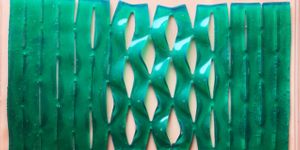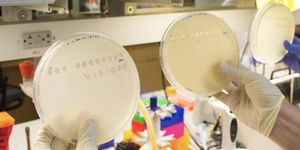Nature can produce incredible displays of color, and we can draw inspiration from them for all sorts of things. Scientists have been inspired by structural proteins that are critical to the brilliant pigments of some animals, like peacocks and butterflies. They created a gel that contains beating heart cells that change the gel's colors as they move.
The scientists used nanoparticles that mimic the crystals of a chameleon's skin; they can absorb some wavelengths and reflect others. When the distance between crystals changes, different wavelengths get reflected. The gel is similar; it has pores that act to absorb some wavelengths and reflect others. Live cells were grown onto the gel, and as they beat, the gel changed shape and color.
The gel was then used to make several things, including a butterfly that could change colors when it moved and a system that could be used to assess the effects of drugs. New medications might be screened on such a biohybrid gel, in which it would be easy to see if the beat frequency had increased.








